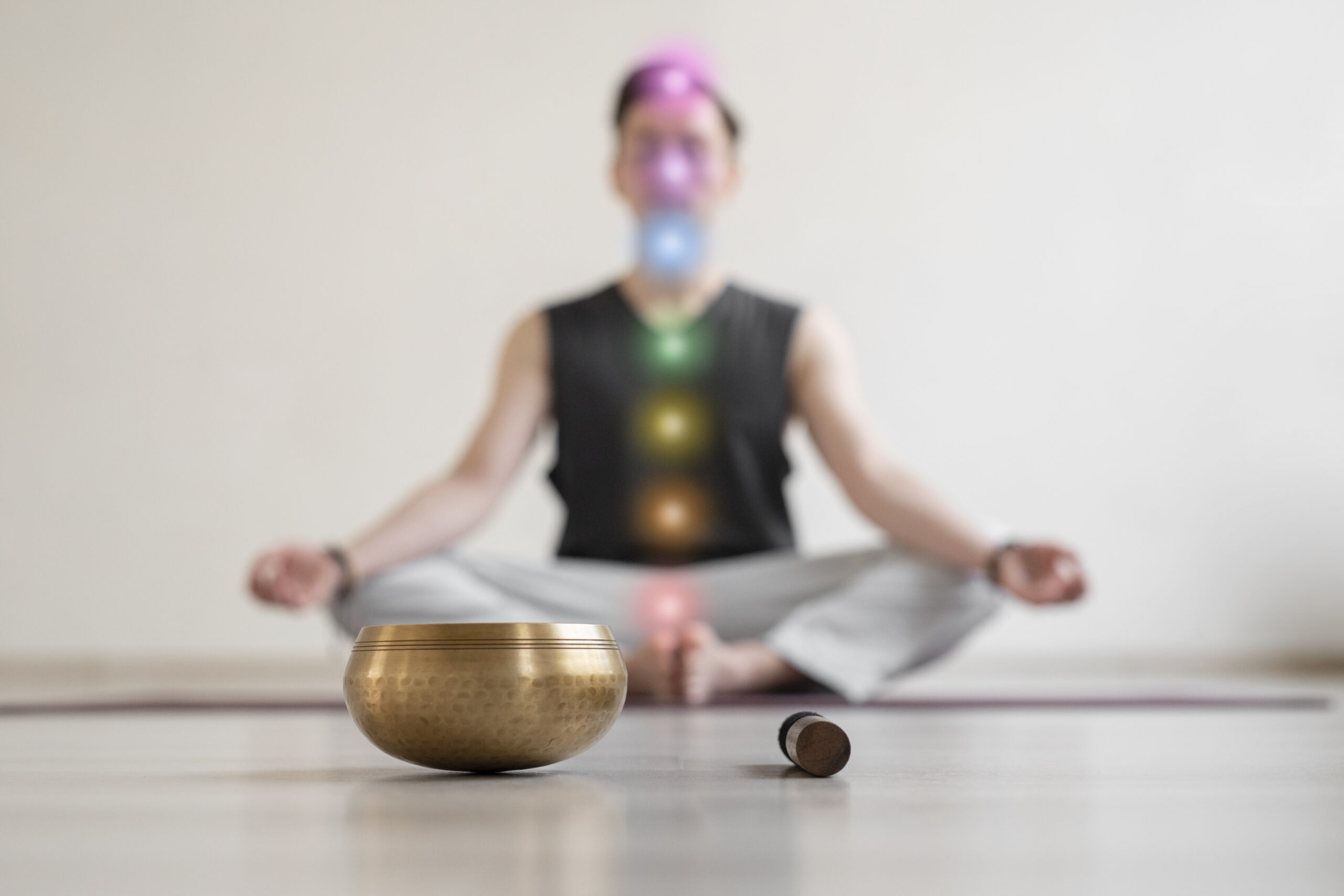Originating from the ancient spiritual traditions of India, the chakras represent a fascinating system of seven distinct energy centers found along the spinal column. These dynamic hubs are intricately linked to various aspects of our physical, emotional, and spiritual existence, acting as energetic junctions that hold the potential to influence our overall well-being and consciousness.
The concept of chakras is deeply interwoven with the rich tapestry of yoga and meditation practices that have flourished in ancient India. These energy centers were revered as pivotal meeting points where the convergence of body, mind, and spirit took place. Each chakra is associated with a unique hue, elemental essence, and resonant sound, symbolizing its specific attributes. From the foundational Muladhara chakra, nestled at the base of the spine, signifying stability and groundedness, to the transcendent Sahasrara chakra at the crown of the head, embodying spiritual illumination and connection with the divine, the chakras present a comprehensive framework for understanding and harmonizing the intricate dance of inner energies.
The chakras serve as gateways, facilitating the flow of life force energy, known as “prana” or “chi,” throughout the body. Maintaining a balanced and harmonious alignment of these energy centers contributes to a profound sense of well-being, emotional equilibrium, and spiritual attunement. Conversely, imbalances or blockages within the chakras are believed to manifest as physical ailments, emotional disturbances, or a noticeable lack of vitality.
Aspiring to bridge the chasm between understanding and action, the practice of chakra assessment and subsequent balancing offers a transformative journey of self-discovery and empowerment. By navigating through a step-by-step process, individuals gain invaluable insights into the state of their chakras and embark on a purposeful quest for equilibrium:
Step 1: Drop In
For the next 10 minutes settle into yourself and go through a chakras visualization meditation.
1. Create a Safe Space
Seek out a tranquil and undisturbed safe environment where you can concentrate your attention without interruptions. Assume a relaxed posture, either seated or reclined and invite your eyes to close.
2. Harmonize Within
Bring awareness to your breath. Inhale deeply, inviting a sense of tranquility to envelop you. As you exhale, release any residual tension, allowing your entire being to enter a state of relaxation.
3. Focus On The Centers
Now start your journey at the foundational chakra, located at the base of your spine, and gradually ascend towards the crown of your head. Visualize each chakra as a luminous, rotating sphere of energy, vividly acknowledging its corresponding color and vitality.
Step 2: Go Through Each Chakra
Engage in a reflective exploration of your chakras, posing specific inquiries to yourself for insightful revelations.
1. Root Chakra
Do you often feel secure and grounded in your daily life?
Are you able to manage stress and challenges without overwhelming anxiety?
How connected do you feel to your physical body and the world around you?
Is your financial situation stable and worry-free?
Are you able to set and maintain healthy boundaries in your relationships?
2. Sacral Chakra
Do you have a healthy and fulfilling emotional life?
Are you comfortable expressing your emotions and desires to others?
How creative and passionate do you feel about your pursuits?
Is your sensuality and sexuality a positive and enjoyable aspect of your life?
Do you maintain a healthy balance between work and play?
3. Solar Plexus Chakra
How confident and empowered do you feel in making decisions?
Are you able to assert yourself and communicate your needs effectively?
Do you have a sense of personal identity and purpose?
How well do you handle criticism and setbacks without losing self-esteem?
Are you able to take on challenges and pursue your goals with determination?
4. Heart Chakra
How easily do you give and receive love and compassion?
Are you able to forgive yourself and others for past mistakes?
How connected do you feel to the people around you and the world at large?
Are you able to maintain healthy and nurturing relationships?
Is your heart open to new experiences and opportunities without fear of getting hurt?
5. Throat Chakra
How effectively do you communicate your thoughts and feelings to others?
Are you able to express your truth and opinions without fear of judgment?
How well do you actively listen and understand others?
Are you able to speak your needs and desires clearly and confidently?
Do you engage in creative self-expression through art, writing, or other means?
6. Third Eye Chakra
How in tune are you with your intuition and inner wisdom?
Are you able to trust your instincts and make decisions based on inner guidance?
How often do you experience vivid dreams or a strong imagination?
Are you open to exploring and understanding spiritual concepts?
Do you feel a sense of clarity and insight when reflecting on your life and experiences?
7. Crown Chakra
How connected do you feel to a higher power or universal consciousness?
Are you able to experience moments of profound peace and spiritual transcendence?
How often do you engage in practices that promote mindfulness and meditation?
Are you open to receiving wisdom and guidance from sources beyond your immediate understanding?
Do you have a sense of purpose and connection to something greater than yourself?
Remember that chakra balance is a holistic and ongoing process, and these questions can serve as a starting point for self-awareness and exploration. If you have concerns about your chakras or spiritual well-being, consider seeking guidance from experienced practitioners or professionals in relevant fields.
Step 3: Reflect
Ponder your responses, uncovering recurring themes or indications of potential imbalances within specific chakras. Focus your attention on chakras that you perceive as underactive or overactive. Notice what aspect is out of balance and ponder the root of that imbalance; it may be childhood trauma that you may not be aware of and have not addressed yet.
Step 4: Initiate Transformation
Based on your contemplative analysis, devise a personalized strategy to reinstate equilibrium within your chakras:
– Engage in physical activities tailored to stimulate the designated chakra.
– Embrace meditation and affirmations, nurturing the imbalanced energy center while fostering positive self-perceptions.
– Cultivate mindfulness through introspective journaling, heightening your awareness of thoughts and behaviors linked to the targeted chakra.
– Immerse yourself in color therapy, surrounding your environment with hues congruent to the energy center’s resonance.
– Harness the therapeutic essence of aromatherapy, integrating scents harmonious with the imbalanced chakra into your relaxation or meditation rituals.
Embarking on a journey of chakra balancing is an ongoing commitment. Craft a regimen encompassing the identified actions and demonstrate unwavering dedication to regular self-care practices.
In embracing this comprehensive guide, you unearth profound revelations about your chakras, identify imbalances, and acquire the tools to orchestrate your path toward serenity, well-being, and self-awareness. Remember that this voyage is perpetual, every stride contributing to your growth and inner equilibrium.

